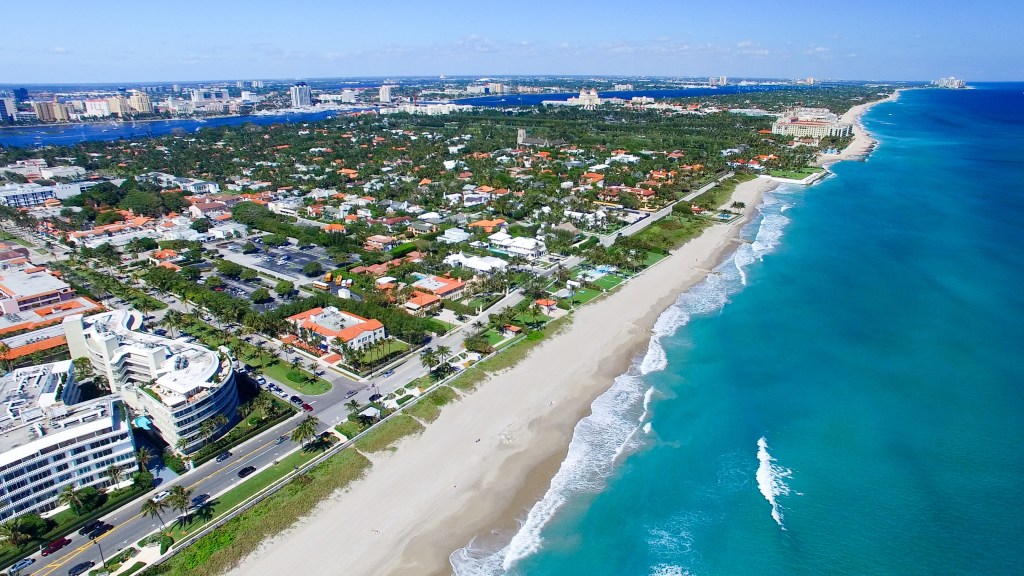There is more to Florida than sunshine and low taxes. Freedom, for example.
The New York Times notes in an article last weekend that Palm Beach is booming, so much so that there aren’t enough restaurant tables to accommodate all the affluent New Yorkers who have moved there, leading to a surge in private clubs. “They are chasing good health, sunshine, Florida’s no-income-tax status and, for the wealthiest among them, the elusive private club membership,” the newspaper enthuses.
The Times story about Palm Beach’s new elite is a perfect example of both flawed logic — and sloppy journalism. Bristling with contempt — for men wearing excessive jewelry and “clothing so bright that it might be radioactive,” plebeian “women dressed more appropriately for a school board meeting than dinner in a resort town”— the newspaper is full of barbs, but only hints at the actual news: “During the early years of the pandemic, there was a 20% increase in New Yorkers moving to Florida,” it says.
Florida has had lower taxes and more sunshine than New York for a long time. What changed was the advent of that damned virus — and the overbearing response to it in New York and other progressive-run cities.
There were two kinds of COVID-inspired moves: The first, most common in cities such as Houston — meaning blue cities in red states — was city-to-suburb, newly remote workers seeking elbow room and space for home offices. Those moves were driven by COVID itself.
The second kind of COVID move was cross-country. These shifts swelled the populations of places ranging from South Florida to Idaho. And these moves — which continue — are not driven primarily by the virus but by bad policy, beginning with a heavy-handed COVID response and continuing with schools and crime.
As the Cleveland Fed has noted in its ongoing study of COVID relocations, the exodus gathered momentum as lockdowns endured, while “the protests sparked by the killing of George Floyd and others were cited for motivating some urban residents to leave. Most major cities experienced increases in violent crime during 2020, and crime rates have historically predicted migration changes. The proposed and enacted cuts to police funding were also cited as a reason to leave.”
Many people moving from states such as New York and Connecticut to Florida and Texas attributed their decisions not to COVID – but cumbersome and invasive COVID restrictions: Mask mandates, the continued shuttering of businesses, and extended school closures prominent among them.
In fact, the Fed’s study not only found that increasing crime sent residents running, but that there was a strong correlation between small-business closures and COVID relocations. In metro areas that saw more business closures and more extended shutdowns, more residents left.
To be sure, cities such as New York suffered from COVID — but the evidence suggests very strongly that they also suffered more from bad COVID policy, with municipal and state authorities from Manhattan to Los Angeles exhibiting the worst combination: incompetence and heavy-handedness. People can take one or the other, but not both together.
New York and Florida ended up with similar rates of COVID deaths, but Florida stuck by a much less authoritarian program. And people — such as those now rollicking in Palm Beach — took note. That is one reason Florida housing prices are up 80% over the past five years as markets such as Miami and the gilded enclave of Palm Beach have bucked the current nation-wide real estate retrenchment.
The wealthy — particularly older wealthy couples — have been the vanguard of the new post-COVID social reality, because they have the most freedom to move. But it won’t stop with the oldsters tearing it up at Mar-a-Lago’s disco night. Imagine a 22-year-old graduate deciding between a job in Manhattan or a job in South Florida. Even five years ago, New York would have been the obvious winner. But no more.
And Gotham’s edge will only erode further as businesses continue to divest from places such as New York and Chicago and shift staff to locales where there is far more sun and far fewer busybodies. Goldman Sachs has a beachhead in West Palm Beach, Citadel has moved their entire operation to Miami, Virtu Financial is growing in Palm Beach Gardens, Blackstone bought $230 million worth of office space in Miami — and many less glitzy firms have made the move, too.
COVID exposed just how quickly so-called progressives will go autocratic when given an excuse — and the sort of people who can just uproot to Palm Beach are not going to forget the experience anytime soon. Sorry, Gray Lady, but nobody is moving to Palm Beach to watch Donald Trump play DJ at Mar-a-Lago or as an excuse to wear pink blazers. They don’t want to be bossed around by tinpot busybodies on the Upper West Side, and they don’t have to be.
After all, they call it “f–k you money” for a reason.












